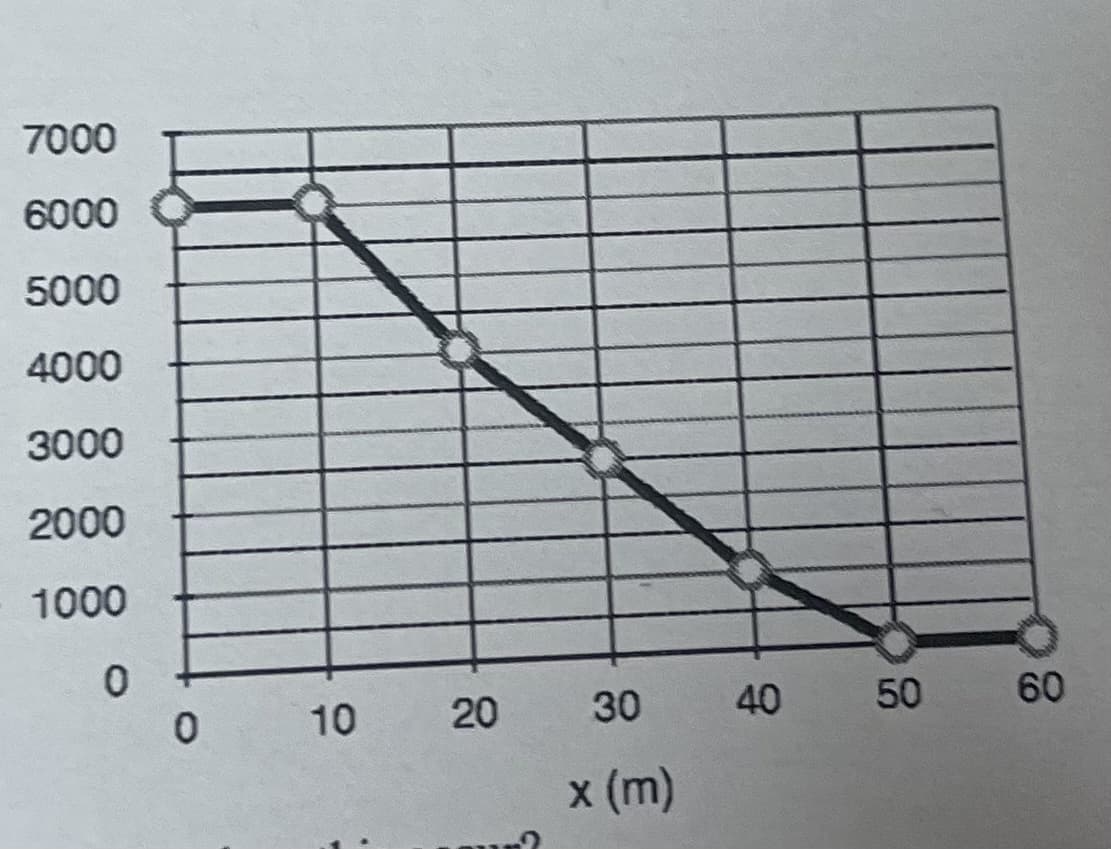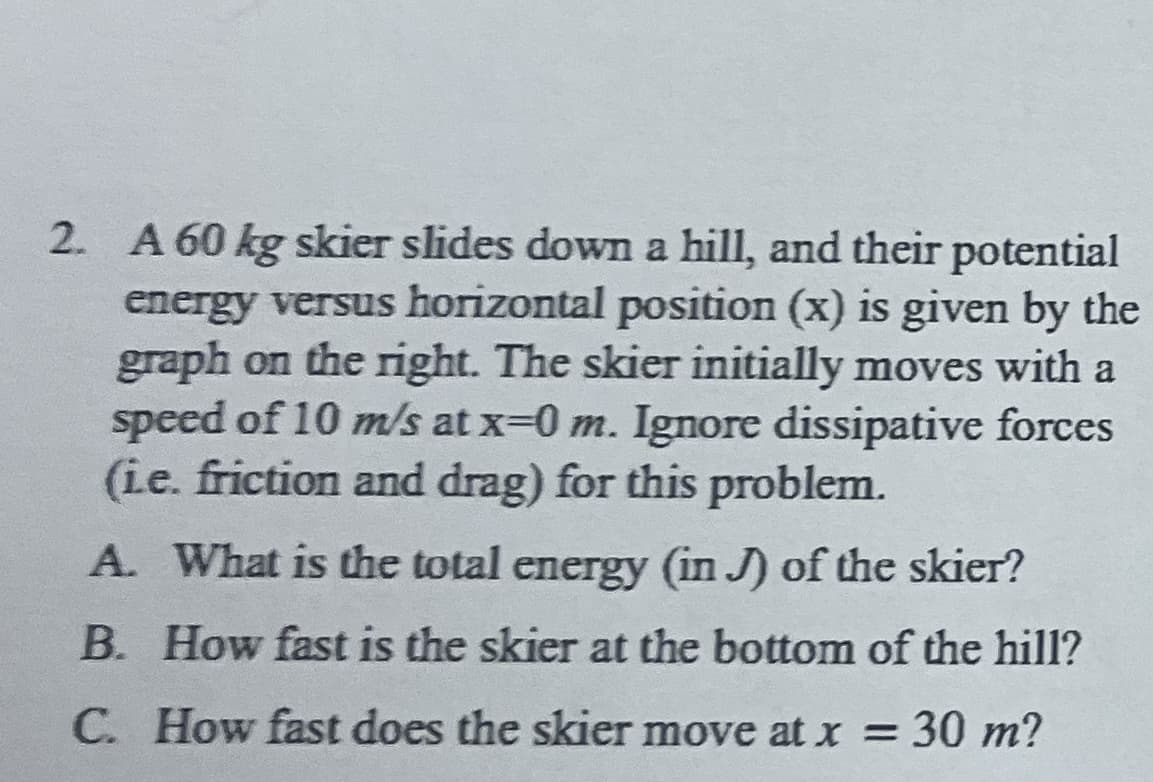2. A 60 kg skier slides down a hill, and their potential energy versus horizontal position (x) is given by the graph on the right. The skier initially moves with a speed of 10 m/s at x-0 m. Ignore dissipative forces (i.e. friction and drag) for this problem. A. What is the total energy (in J) of the skier? B. How fast is the skier at the bottom of the hill? C. How fast does the skier move at x = 30 m?
2. A 60 kg skier slides down a hill, and their potential energy versus horizontal position (x) is given by the graph on the right. The skier initially moves with a speed of 10 m/s at x-0 m. Ignore dissipative forces (i.e. friction and drag) for this problem. A. What is the total energy (in J) of the skier? B. How fast is the skier at the bottom of the hill? C. How fast does the skier move at x = 30 m?
Related questions
Question

Transcribed Image Text:7000
6000
5000
4000
3000
2000
1000
0
0
10
20
20
30
40
50
50
60
x (m)

Transcribed Image Text:2. A 60 kg skier slides down a hill, and their potential
energy versus horizontal position (x) is given by the
graph on the right. The skier initially moves with a
speed of 10 m/s at x=0 m. Ignore dissipative forces
(ie. friction and drag) for this problem.
A. What is the total energy (in J) of the skier?
B. How fast is the skier at the bottom of the hill?
C. How fast does the skier move at x = 30 m?
Expert Solution
This question has been solved!
Explore an expertly crafted, step-by-step solution for a thorough understanding of key concepts.
Step by step
Solved in 3 steps with 3 images
